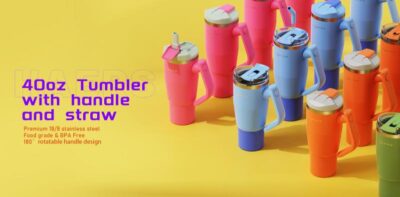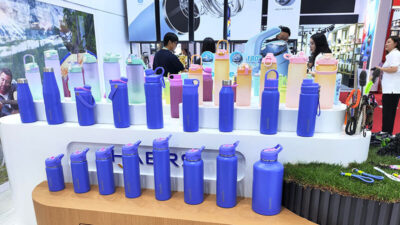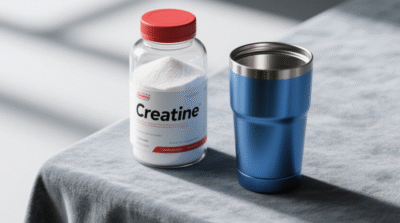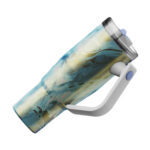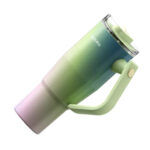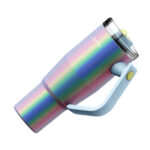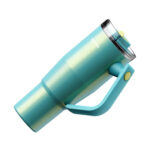A Complete Buyer’s Guide to Choosing the Best Food Jars — Insights from a Manufacturer
More and more people today are choosing to bring their own lunch — it’s healthier, more economical, and better for the environment. And at the heart of every good homemade meal on the go lies one essential item: the best food jars.
A well-designed food jar does more than just keep your soup or pasta warm. It preserves freshness, maintains flavor, and turns your lunchtime into something you actually look forward to. But with so many options on the market — from stainless steel thermal jars to lightweight plastic versions — how do you know which one is right for you?
As a manufacturer specializing in insulated food containers, we look at this question from a slightly different angle. Beyond style and size, what really matters are the materials, insulation technology, and production details that determine a jar’s real-world performance.

In this guide, we’ll walk you through how to choose the right food jar based on your needs — whether it’s for work, school, travel, or gifting — and share some professional insights from the production side that most consumers never get to see.
Table of Contents
ToggleWhy Choose a Food Jar Instead of a Lunch Box?
If you’re tired of cold lunches or soggy leftovers, it might be time to upgrade from a lunch box to a food jar. While a lunch box works great for sandwiches, salads, or snacks that can be enjoyed cold, a food jar is built for something more comforting — hot rice, pasta, soups, and stews that stay warm for hours.
Modern vacuum-insulated food jars are engineered to maintain temperature for 6–12 hours, keeping your meal hot until lunchtime (or even dinner). The secret lies in the double-wall stainless steel design, which minimizes heat transfer and locks in warmth — no microwave needed.
Beyond temperature retention, stainless steel food jars also offer superior durability and hygiene. They don’t retain odors, resist staining, and can handle a few bumps in your bag without leaking or cracking — something most plastic lunch boxes can’t promise.
In short, if you love the idea of opening your lunch to the comforting aroma of freshly cooked food, a well-made vacuum food jar is your best lunch companion.
How Does a Food Jar Keep Food Warm — and Can It Cook?
Let’s start with a fun question we often hear: Can food actually be cooked in a vacuum thermos?
Surprisingly, yes — but only certain types of food.
A high-quality vacuum food jar works just like a mini slow cooker. The double-walled stainless steel body, combined with a vacuum-insulated layer, creates a low heat-loss environment. Once you pour in boiling water or freshly cooked food, the trapped heat gently circulates inside, keeping your meal hot for 6–12 hours.
Here’s how some people even cook with it:
- Preheat your food jar by filling it with boiling water for a few minutes.
- Add ingredients such as oatmeal, instant noodles, or pre-soaked rice.
- Seal tightly and let it sit for 1–2 hours.
The result? Perfectly soft oatmeal, tender pasta, or warm soup — all without a stove.
Just one reminder: don’t use it for raw meat or hard ingredients that require continuous boiling; a food jar isn’t designed for full cooking, only gentle heat retention.
This clever use of residual heat not only saves energy but also makes your food jar an eco-friendly choice for on-the-go meals.
And as we’ll see next, picking the right food jar depends on how you plan to use it — whether it’s for school, work, or outdoor adventures.
How to Choose the Right Food Jar for You
From a manufacturer’s point of view, choosing a food jar isn’t just about size — it’s about structure, materials, insulation performance, and design details that actually affect how well it keeps your food hot (and safe). Here’s what we recommend looking for:
1. Check the material grade.
At minimum, both the inner and outer walls should be made of 304 stainless steel, which is food-grade and resistant to rust and odor. For better corrosion resistance and insulation stability, especially when holding soups or acidic foods, we recommend 316 stainless steel for the inner wall. It’s the same material used in medical and premium kitchen applications — tougher, cleaner, and more durable.
2. Verify the insulation performance.
Don’t just trust “long-lasting heat” on the label. A well-made food jar should clearly state the temperature range and duration, such as “keeps food above 60°C for 6 hours.” Professional-grade manufacturers test their products under standardized conditions to ensure consistent thermal performance — both the temperature and the duration matter.
3. Look at the sealing design.
Food jars usually feature a wide mouth, which makes them easier to eat from — but also allows heat to escape faster. To maintain insulation and prevent leaks, check if the seal ring is made of BPA-free silicone. This ensures a tight, safe closure without compromising food safety or odor control.
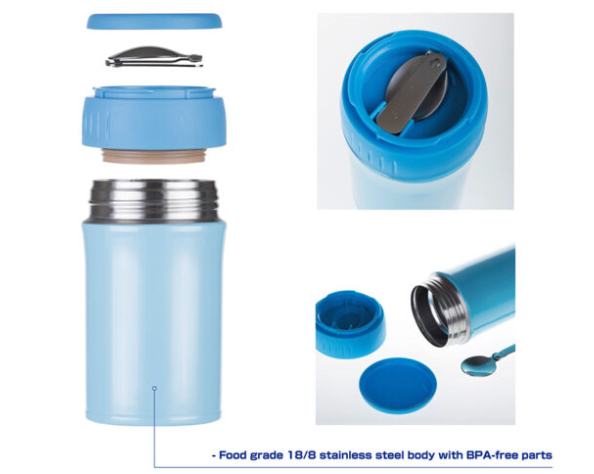
4. Consider the structure and compartments.
Some food jars include multiple layers or compartments to separate different dishes — a great way to keep rice, soup, and side dishes from mixing flavors. However, more layers aren’t always better. Too many inserts can reduce the effective capacity of the main container. Choose the structure that fits your typical lunch style — functional, not excessive.
5. Choose the right capacity last.
Once you’ve checked all the essentials above, then decide on size. For kids, 300–400ml is usually enough; for adults, 500–700ml works well. And if you’ve got a hearty appetite or plan to use it for outdoor trips, go for 800ml or more.
When selected carefully, a well-constructed stainless steel food jar won’t just keep your meal warm — it’ll keep your day running smoother too.
How to Pack Hot Meals Properly
Even the best food jar can’t perform well if it’s not packed correctly. As a manufacturer, we often see users overlook a few simple steps that make a big difference in heat retention and food quality. Whether you’re packing hot pasta, rice, or soup, here’s how to make sure your lunch stays warm and delicious.
1. Preheat your food jar.
Before filling, pour boiling water into the jar, close the lid, and let it sit for 3–5 minutes. This step warms up the stainless steel walls and minimizes the initial temperature drop once food is added. Then, pour out the water and fill the jar immediately with your hot meal.

2. Layer smartly — don’t mix everything at once.
If you’re packing hot pasta for lunch, keep sauces and noodles slightly separated to avoid sogginess. Some food jars come with a divider or small inner cup for exactly this purpose. The key is to fill the jar to about 80–90% full — this reduces air space, helping retain heat longer while preventing overflow.
3. Control the moisture and consistency.
For foods like sushi rice, moisture and temperature control are everything. (If you’ve ever tried making sushi rice in a Zojirushi rice cooker, you know how precise it needs to be!) When using a food jar, pack rice that’s freshly cooked and still slightly moist — not dry or stiff. Too much condensation, however, can lead to soggy texture or flavor loss.
4. Seal immediately after packing.
Once the food is inside, close the lid tightly right away. Every minute that the jar stays open allows hot air to escape — and that’s heat you’ll never get back.
5. Avoid reheating or shaking.
Food jars are designed to retain heat, not generate it. Avoid opening the jar repeatedly or shaking it to “mix” the contents. This introduces cool air and shortens insulation time.
When packed correctly, a high-quality stainless steel food jar can keep your pasta hot, your soup steaming, and your rice soft for hours — without a single trip to the microwave.
Recommended Food Jar Types for Different Scenarios
| User / Scenario | Recommended Food Jar Type | Key Features |
|---|---|---|
| Office Workers | Large-capacity vacuum food jar (500–700ml) | Keeps food hot for hours, sleek and minimalist design, leak-proof |
| Students / Kids | Lightweight small jar (300–400ml) | Easy to carry, colorful options, leak-proof, just the right size for school lunches |
| Outdoor / Travel | Heavy-duty insulated jar (700–800ml+) | Durable, shock-resistant, anti-spill, keeps meals hot or cold longer |
| Meal Preppers / Families | Multi-compartment food jar | Separates dishes to prevent mixing flavors, convenient for balanced meals |
Tips for users:
Match the jar to your lifestyle: a small jar is perfect for kids, a large jar is better for office lunches or big appetites.
Check compartments: enough to separate your dishes, but not so many that the main space is cramped.
Look for BPA-free seals: ensures leak-free and keeps your meal hot for longer.

Cleaning and Maintenance Tips
Keeping your food jar clean not only ensures hygiene but also helps maintain its insulation performance and prolongs its lifespan. Here’s how to do it right:
1. Clean immediately after use
Wash your food jar as soon as possible to prevent food residues from drying or sticking. Use warm water and mild dish soap
2. Pay attention to seals and lids
Remove silicone rings and any detachable parts for thorough cleaning。Make sure they are completely dry before reassembling to prevent mold.
3. Remove odors naturally
For lingering smells, use a mixture of baking soda and warm water or lemon water.Let it sit for 10–15 minutes, then rinse well.
4. Avoid abrasive cleaning tools
Do not use steel wool or harsh brushes that can scratch the stainless steel and damage the vacuum layer.A soft sponge or bottle brush works best.
5. Store properly
Keep the lid slightly open when storing empty jars to allow air circulation and prevent moisture buildup.
Extra tip: Regularly checking your jar for scratches or damaged seals ensures it continues to keep food hot and leak-free over time.
Summary & Buying Advice
Choosing the right food jar goes beyond just picking the size. Here’s what to focus on:
Material: Stainless steel (304 or 316) is the safest and most durable choice, ensuring no odors or rust.
Insulation performance: Check the label for both temperature and duration — for example, “keeps food above 60°C for 6 hours.”
Design and usability: Wide-mouth jars make eating and cleaning easier. BPA-free silicone seals keep your meals hot and leak-free.
Compartments: Choose a number that fits your typical lunch without squeezing the main space.
Capacity: Kids usually do well with 300–400ml, adults with 500–700ml, and hearty eaters or outdoor travelers can go for 800ml or more.
If you want every meal to feel freshly cooked, a stainless steel vacuum food jar is your best companion — keeping soups, noodles, rice, and oatmeal hot for hours.



